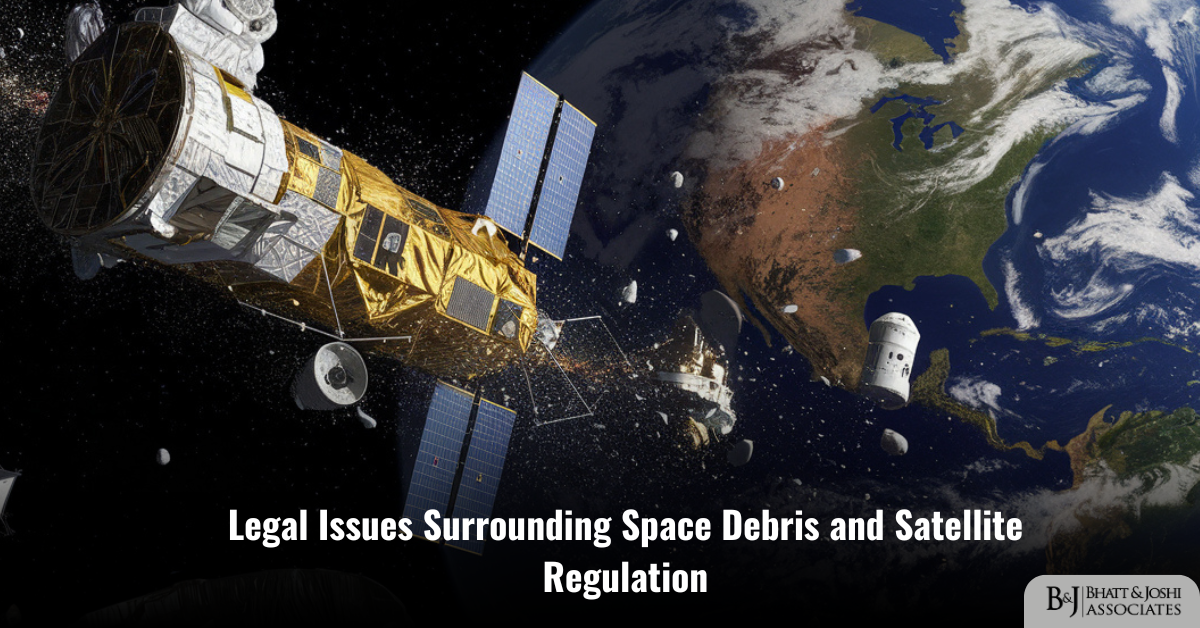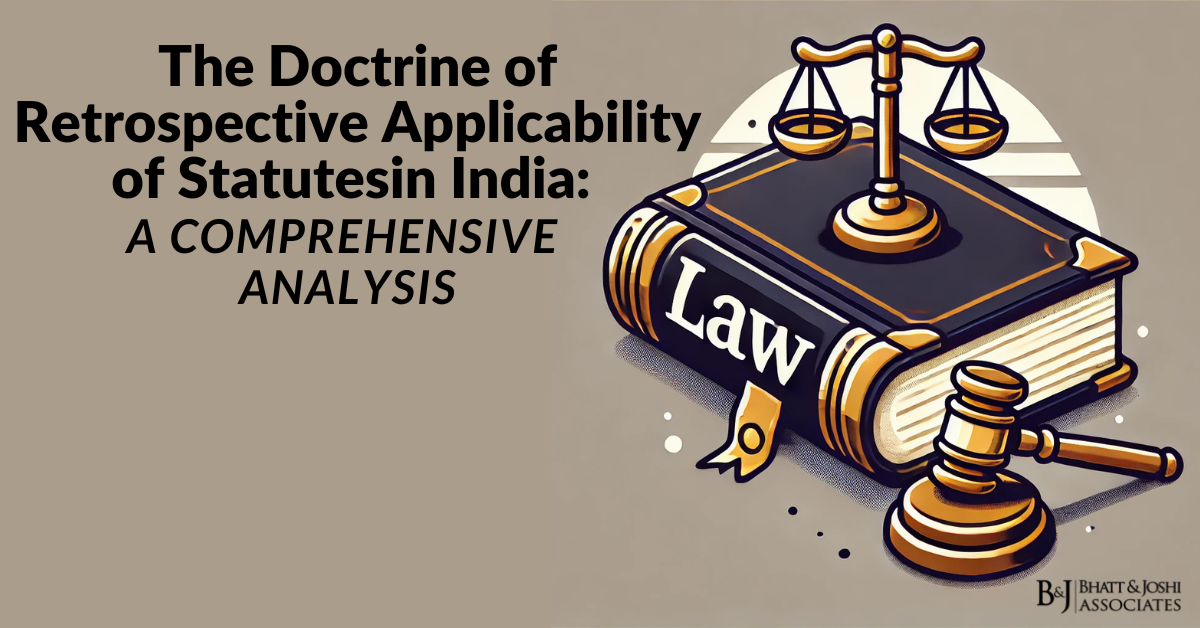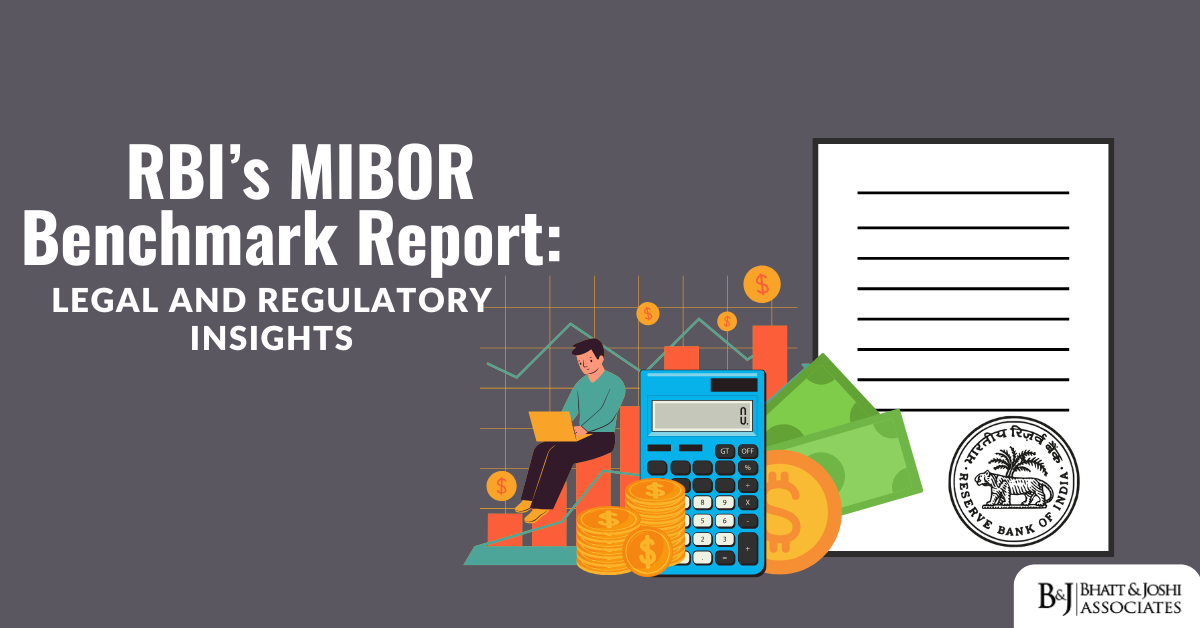Introduction
Space exploration and satellite deployment have expanded rapidly, marking a new era of technological advancement and international collaboration. However, as the number of satellites in orbit increases, so does the problem of space debris, leading to significant legal challenges. Space debris, commonly referred to as space junk, encompasses defunct satellites, spent rocket stages, and fragments resulting from collisions or disintegration. As space becomes increasingly crowded, the risk of collisions between operational satellites and debris intensifies, posing threats to vital communication networks, military operations, and scientific exploration. This article explores the legal issues surrounding space debris and satellite regulation, focusing on international treaties, national laws, and case laws addressing the growing concerns of space sustainability.
The Nature of Space Debris
Space debris is the inevitable by-product of human activity in space. Over 8,000 tonnes of debris currently orbit the Earth, a result of decades of satellite launches, rocket propulsion stages, and in-orbit collisions. The risks posed by this debris are twofold: first, the immediate threat to existing satellites and space missions, and second, the long-term sustainability of space activities. If not properly managed, space debris could render key orbits unusable for future generations, an issue known as the “Kessler Syndrome,” where a cascading series of collisions makes space travel hazardous.
From a legal standpoint, space debris presents complex challenges because it exists beyond the territorial jurisdiction of any one nation. Therefore, it requires a collective international approach to establish a framework for regulation, mitigation, and accountability.
International Treaties Regulating Space Activities
The cornerstone of space law is the Outer Space Treaty of 1967, formally known as the “Treaty on Principles Governing the Activities of States in the Exploration and Use of Outer Space, Including the Moon and Other Celestial Bodies.” The treaty, ratified by over 100 countries, sets the fundamental principles for space exploration, emphasizing that space must be used for peaceful purposes and that outer space, including the Moon, is not subject to national appropriation. However, it lacks specific provisions for addressing space debris.
Article VI of the Outer Space Treaty establishes that states bear international responsibility for national activities in outer space, including those conducted by private entities. Article VII places liability on states for damages caused by their space objects, including damage caused by space debris. However, there are ambiguities in how these provisions apply to the current challenge of space debris.
The Liability Convention of 1972 complements the Outer Space Treaty by addressing damage caused by space objects. Under the convention, a launching state is liable for damage caused on the surface of the Earth or to aircraft in flight. However, the convention does not provide clear mechanisms for liability regarding damage caused in outer space, such as a collision between a defunct satellite and an operational one.
In addition to these treaties, the Registration Convention of 1976 requires that states register their space objects with the United Nations. While this facilitates identification and tracking, it does not address the removal or mitigation of debris. States remain responsible for their space objects, even after they cease functioning, raising questions about the legal obligations for removing defunct satellites and spent rocket stages.
National Laws and Space Debris
While international treaties provide the overarching legal framework, individual nations have developed their own laws and policies to regulate space debris. The United States, for example, through the Federal Communications Commission (FCC) and the Federal Aviation Administration (FAA), requires operators of commercial satellites to submit debris mitigation plans as part of their licensing process. The U.S. Orbital Debris Mitigation Standard Practices (ODMSP) outlines guidelines for preventing the creation of debris, including limiting the lifespan of satellites in low Earth orbit (LEO) to reduce long-term risks.
Similarly, the European Space Agency (ESA) has developed guidelines under the European Code of Conduct for Space Debris Mitigation, encouraging the voluntary adoption of best practices for debris mitigation. These guidelines are not legally binding, but they reflect a growing awareness of the need for responsible space activity.
Japan, China, and India have also adopted national policies to address space debris. In India, the Indian Space Research Organisation (ISRO) has developed debris mitigation measures and plans for satellite deorbiting, but the legal framework is still evolving. Many emerging spacefaring nations are only beginning to grapple with the legal implications of space debris as they expand their space programs.
Liability and Case Law
One of the critical issues in space debris regulation is liability for damages caused by debris. While the Liability Convention establishes liability for space objects, it has rarely been invoked in practice. The most notable case under the convention occurred in 1978 when the Soviet Union’s Cosmos 954 satellite re-entered Earth’s atmosphere, scattering radioactive debris over Canada’s Northwest Territories. Canada sought compensation under the Liability Convention, eventually receiving $3 million from the Soviet Union.
However, collisions in outer space have raised new legal questions. In 2009, a collision between an inactive Russian satellite, Cosmos 2251, and a U.S. commercial satellite operated by Iridium Communications created significant debris in LEO. Although the event was a major wake-up call for space-faring nations, no liability claims were filed, highlighting the gaps in the current legal framework.
One of the legal challenges is determining responsibility when debris from multiple space objects causes damage. The attribution of fault becomes difficult, especially when dealing with fragments that may be decades old. Additionally, the increasing number of private actors in space complicates the issue of state responsibility, as the Outer Space Treaty places ultimate responsibility on states, even for private commercial activities.
Space Debris Mitigation Guidelines
In response to the growing problem of space debris, the United Nations Committee on the Peaceful Uses of Outer Space (COPUOS) developed the Space Debris Mitigation Guidelines in 2007. These guidelines, although non-binding, provide a framework for minimizing the creation of new debris and encourage the removal of defunct satellites from orbit. The guidelines call for limiting debris during normal operations, minimizing post-mission disposal times, and preventing accidental collisions.
COPUOS also encourages states to incorporate these guidelines into their national legislation, ensuring that space operators adhere to best practices for debris mitigation. Several space-faring nations have adopted these guidelines into their national space policies, but enforcement mechanisms remain weak.
The Role of Emerging Space Law
As space activities expand, there is a growing recognition that the existing legal framework is insufficient to address the challenges posed by space debris. Emerging space law focuses on filling these gaps by promoting sustainability in space operations and creating new mechanisms for liability and mitigation. One proposal is the establishment of an international space traffic management (STM) system to coordinate the movement of satellites and prevent collisions.
Space traffic management would require real-time tracking of all space objects and the coordination of satellite maneuvers to avoid collisions. The development of STM has been slow, largely due to the complexities of international cooperation and concerns about state sovereignty in outer space. However, given the growing number of satellites and the increasing risk of debris, the development of STM is essential for the future of space activities.
Another emerging issue is the legal status of space salvage and debris removal technologies. Several companies are developing technologies to remove space debris, such as nets, harpoons, and robotic arms. However, questions arise regarding ownership of the debris, particularly if the debris belongs to another state or private entity. The removal of debris without the owner’s consent could be considered an illegal act under current space law.
Space Debris in the Context of Environmental Law
There is also an increasing recognition of space debris as an environmental issue. Some scholars have argued that the principles of environmental law, such as the “polluter pays” principle, should be applied to space activities. This would place greater responsibility on states and private actors to clean up debris and prevent further pollution of outer space.
The concept of “common heritage of mankind,” established in the Outer Space Treaty, supports the view that outer space should be preserved for future generations. Under this principle, states have a duty to ensure that their activities do not harm the space environment. This could provide a legal basis for stronger regulation of space debris and the development of international mechanisms for debris removal.
Recent Developments and Case Laws
Recent developments in space law include growing international cooperation to address space debris. The European Space Agency’s ClearSpace-1 mission, set to launch in 2025, will be the first active debris removal mission, designed to capture and deorbit a defunct satellite. This mission will set an important legal precedent for future debris removal efforts, as it raises questions about the legal ownership of space debris and the responsibilities of states and private actors in mitigating debris.
In 2021, the United Nations General Assembly adopted a resolution on “Reducing Space Threats through Norms, Rules and Principles of Responsible Behaviours.” This resolution encourages states to develop norms of behavior in space to reduce the risk of collisions and the creation of debris. Although non-binding, the resolution reflects the growing consensus on the need for responsible space activities and debris mitigation.
Recent legal debates have also focused on whether the creation of space debris could be considered an act of negligence or even a violation of international law. Scholars and legal experts continue to explore whether states or private companies could be held accountable for creating debris that causes damage to other space assets.
The Future of Space Debris Regulation
The future of space debris regulation will likely involve a combination of international treaties, national laws, and voluntary guidelines. One of the key challenges will be balancing the rights of states to explore and use outer space with the need to preserve the long-term sustainability of space activities. As more private actors enter the space industry, new regulatory frameworks will be needed to ensure that they comply with debris mitigation standards.
Technological advances in debris removal and space traffic management will also play a critical role in addressing the problem of space debris. However, these technological solutions must be supported by clear legal frameworks that define ownership, liability, and responsibility for debris removal.
Strengthening International Cooperation
One of the key solutions to the problem of space debris lies in strengthening international cooperation. While international treaties such as the Outer Space Treaty provide a broad legal framework, they do not offer detailed solutions to the modern challenges of space debris. States must work together to develop more robust and comprehensive regulations that cover not only the creation and mitigation of debris but also its removal and long-term management. This could involve amendments to existing treaties or the creation of new, legally binding international agreements specifically focused on space sustainability.
International organizations such as the United Nations Committee on the Peaceful Uses of Outer Space (COPUOS) and the International Telecommunication Union (ITU) play critical roles in fostering such cooperation. These organizations facilitate dialogue among space-faring nations and help build consensus on important issues related to space governance. However, the enforcement of international agreements remains a significant challenge. Without strong enforcement mechanisms, states may be reluctant to comply with guidelines and regulations that could limit their ability to conduct space activities.
Developing Liability and Accountability Mechanisms
Another critical legal issue is the development of clear mechanisms for liability and accountability. While the Liability Convention provides a basic framework for addressing damage caused by space objects, it does not address many of the complexities introduced by space debris. For example, who is liable when a piece of debris from a satellite that was launched decades ago collides with a new satellite? What happens when a privately operated satellite causes damage, and to what extent is the state responsible for the actions of private companies operating in space?
Establishing clear rules for liability in space is essential for creating accountability and incentivizing responsible behavior. Some legal scholars have proposed a no-fault liability regime for space debris, where the state or private operator responsible for creating the debris would be automatically liable for any damages caused. Others suggest adopting a contributory liability system, where multiple actors share responsibility for a collision based on the degree of fault or negligence.
Role of National Space Laws in Mitigating Debris
National space laws play a significant role in shaping the behavior of private space actors. Countries with active space programs, such as the United States, Russia, China, and India, have implemented national regulations that govern the licensing of space activities, including the mitigation of space debris. These regulations often require operators to include debris mitigation plans as part of their satellite mission proposals.
For instance, the United States has implemented specific debris mitigation guidelines through agencies such as the Federal Communications Commission (FCC) and the National Aeronautics and Space Administration (NASA). The United States’ Orbital Debris Mitigation Standard Practices require that satellites in low Earth orbit be deorbited within 25 years after the end of their operational life. Similarly, in Europe, the European Space Agency (ESA) and individual member states have adopted national policies that reflect the guidelines established by the European Code of Conduct for Space Debris Mitigation.
However, the effectiveness of these national laws varies depending on the level of enforcement and compliance monitoring. Some states may prioritize commercial interests over environmental concerns, resulting in weak or inconsistent enforcement of debris mitigation regulations. Strengthening national laws and aligning them with international standards is critical to ensuring that space activities remain sustainable and safe.
Addressing New Legal Challenges
As space activities evolve, new legal challenges continue to emerge. One such challenge is the rise of mega-constellations—large networks of small satellites launched by companies such as SpaceX, OneWeb, and Amazon. These constellations, often consisting of thousands of satellites, significantly increase the number of objects in low Earth orbit, raising concerns about congestion and the potential for collisions. While mega-constellations offer tremendous benefits for global communications, internet access, and remote sensing, they also pose significant risks to the space environment.
Regulating mega-constellations presents new legal questions about the allocation of orbital slots, frequency coordination, and debris mitigation. Existing international treaties and national laws may not be sufficient to address these issues, requiring new regulations and legal frameworks to manage the growing number of satellites in orbit.
Another emerging legal issue is the ownership and salvage of space debris. As companies develop technologies to capture and remove debris from orbit, questions arise regarding who owns the debris and whether it can be legally removed without the owner’s consent. Under current space law, space objects remain the property of the launching state or the private entity that launched them, even after they have become defunct. This creates a potential legal conflict between the need to remove hazardous debris and the rights of the original owners.
Future Legal Developments and Space Sustainability
The future of space debris regulation will require a multi-faceted approach that incorporates legal, technological, and policy solutions. One area of potential development is the establishment of binding international agreements that impose stricter debris mitigation requirements on all space-faring nations. These agreements could include mandatory deorbiting timelines for defunct satellites, limits on the number of satellites that can be launched in certain orbits, and financial penalties for operators that fail to comply with debris mitigation guidelines.
Additionally, the development of new technologies for debris removal and space traffic management will be essential for maintaining the long-term sustainability of space activities. As these technologies evolve, legal frameworks must adapt to address issues related to ownership, liability, and the use of debris removal systems.
A more proactive approach to space sustainability could also involve the creation of an international space traffic management (STM) system. Such a system would require real-time tracking and coordination of all space objects, ensuring that satellite operators take steps to avoid collisions and manage their spacecraft responsibly. Implementing an STM system would likely require significant international cooperation and the development of new legal and regulatory structures.
Conclusion: The Future of Space Debris Management and Satellite Regulation
The legal issues surrounding space debris and satellite regulation are complex and require an integrated approach that combines international treaties, national laws, and voluntary guidelines. While existing legal frameworks such as the Outer Space Treaty and the Liability Convention provide a foundation, they are insufficient to address the growing challenges posed by space debris.
As space activities continue to expand, the need for clear and enforceable regulations becomes increasingly urgent. International cooperation will be essential for developing new legal mechanisms that promote space sustainability and ensure the long-term safety and security of outer space. Nations and private actors must work together to develop solutions that address the risks of space debris, including stronger debris mitigation standards, the implementation of space traffic management systems, and the development of liability frameworks that hold space operators accountable for their actions.
The future of space exploration depends not only on technological innovation but also on the development of robust legal frameworks that protect the space environment for future generations. By addressing the legal challenges of space debris and satellite regulation, the international community can ensure that space remains a safe and accessible domain for all.














